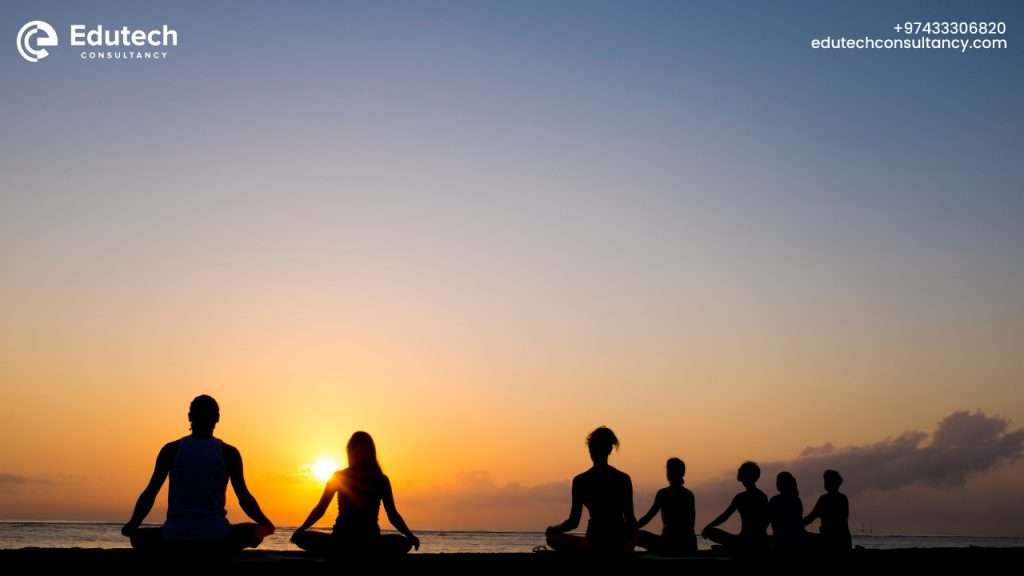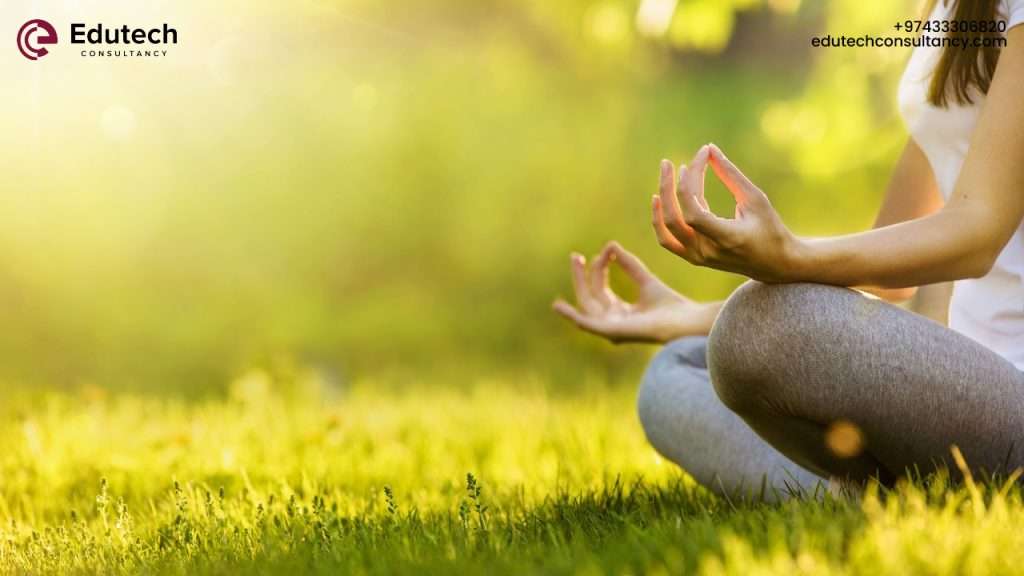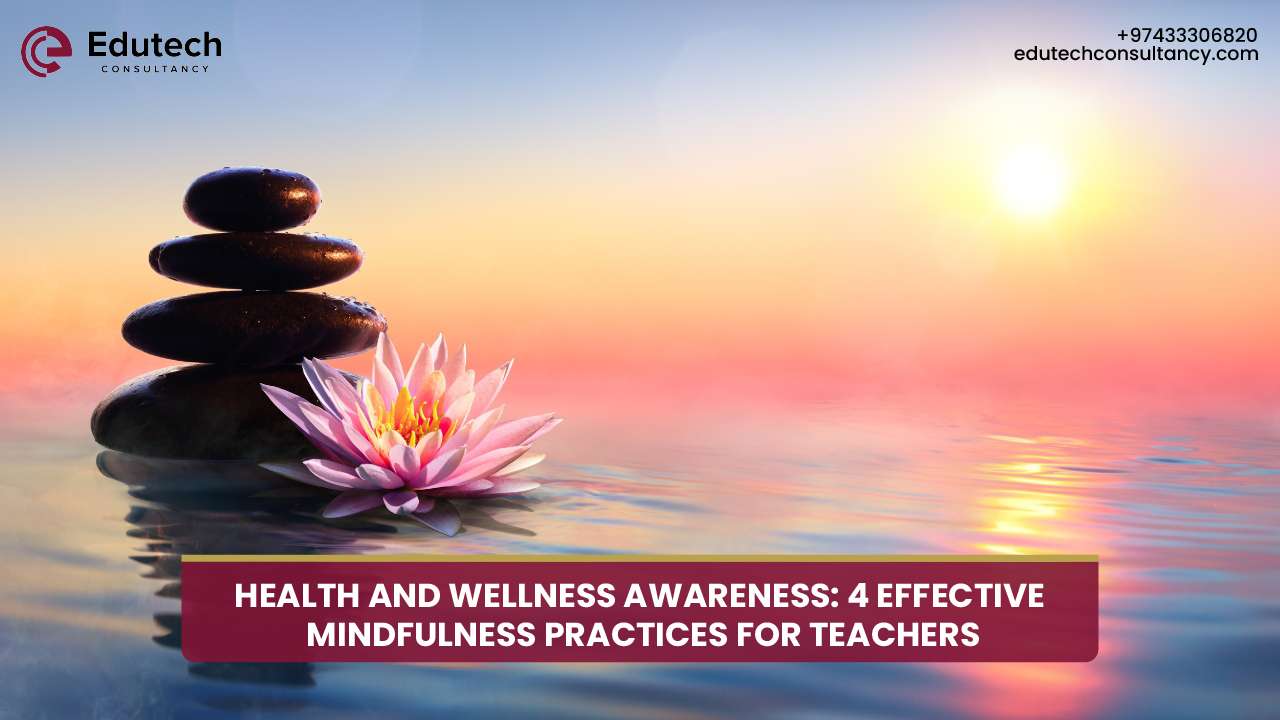The present-day classroom is profoundly characterized by a fast-paced approach to learning. With technology in information and communication, teachers and students face enormous challenges. The frequent distractions also pose profound stressors to the educational process, negating its intended purpose. In this context, health and wellness awareness is the need of the hour. This refers to promoting ways for teachers to care for their physical and mental health and well-being. Moreover, one effective practice is to include mindfulness in daily practices, which refers to paying attention to the present moment.
Besides the benefits of practicing individually, mindfulness can profoundly impact the classroom environment. By integrating mindfulness practices into their daily routines, teachers can indeed create a more peaceful and focused learning space for themselves and their students.
Additionally, it helps maintain emotional balance, improves concentration and increases productivity. Therefore, this blog will discuss mindfulness strategies teachers can incorporate into their daily routines. Furthermore, we will discuss its many advantages, the ways it can be utilized, and how it can improve teachers’ performance. Finally, being mindful can help nurture orientation toward a learning culture where all can grow with more understanding and compassion.
Understanding Mindfulness: Health and Wellness Awareness for Teachers
The meaning of mindfulness is to implement and integrate purposefully into practice those ways that can help teachers develop self-awareness, increase emotional intelligence, and improve mental health. Mindfulness prepares educators to concentrate on the present, a virtue that is rare due to the influence of modern technology and distractions in the environment. Furthermore, this approach is essential for teachers’ health and wellness awareness.
Four Effective Mindfulness Practices for Teachers
There are numerous ways to practice mindfulness techniques. But the ones that can be easily utilized and practiced daily with effective outcomes are the ones to go for.
Let’s go through four effective ways teachers can practice mindfulness and discuss how they can positively impact a teacher’s professional life.
1- Yoga: The Flexible Practice to Learn Mindfulness
Yoga is a practice that nurtures the mind and body. The various postures acquired, along with breathing techniques, provide a comprehensive approach to exercising mindfulness.
How to Employ:
- Start with practicing beginner’s yoga poses at home
- Look for guided yoga classes or events
- Prioritize the focus on your body and breathing during the yoga poses

Some beginner-friendly yoga poses to get you started:
- Relaxation: Sit on the floor, cross your legs. Sit with an up straight posture. Relax and hold the posture.
- Child’s Pose: Kneel on the floor. Sit back on your feet. Stretch your hands up and above and lower your forehead to the ground.
- Lie on the floor on your back: Extend legs straight and arms by your sides. Keep your eyes closed and leave your whole body in a relaxing position.
2- Deep breathing techniques: The Fundamental of Mindfulness
Breathing exercise is the primary element in any mindfulness technique. It provides the nervous system time for regulation and enhances the ability to pay attention deeply in the moment.
How to do it?
- Close your eyes, start breathing slowly deeply through your nose
- Feel the sensation as you feel your lungs are full of air
- Once done, start exhaling slowly through your mouth
- Repeat this cycle several times, preferably 5-10 minutes
- While doing focus merely on the movements happening in response to deep breathing
3- Meditation
Meditation encompasses training the mind to focus and redirecting attention towards a single point or object. Hence in pursuit of health and wellness awareness, the goal of meditation is to attain clarity and peace.

How to Do It?
Basic meditation involves sitting comfortably in a relaxed posture, either on the floor or on a couch, whichever you prefer best. Close your eyes and try to focus on the sensations in your body as you breathe and relax. The key here is to help your thought pattern attain focus on what you are doing. Without any further judgment, if your thoughts wander, try to bring them back to your point of attention.
4- Positivity and Gratitude: The Key to Fulfilled Life
Promoting positivity and gratitude can considerably enhance teachers’ overall well-being in a world that poses unexpected challenges daily. In addition, these two emotions are powerful in their ability to reframe our life perspectives and live more fulfilling lives.
What does Positivity mean?
Positivity means having a mindset that only focuses on the brighter side of life. Even in times of adverse events, choosing to focus on the good in life helps one practice optimism and find the joy of life.
Gratitude
Gratitude, on the other hand, helps us acknowledge the blessings of life. No matter how big or small, practicing gratitude makes us aware of what we are blessed to have rather than worrying about those we have lost.
Ways to practice:
- Enjoy and value the simple joys of life
- Helps others in minor tasks to boost your mood
- Replace negative thoughts with positive affirmations
- Note down things you appreciate in your life every day
- Keep a distance from people who have a negative mindset
- Say words of kindness like May you be happy, May you find peace etc
- Surround yourself with people who have a positive and growth mindset
Advantages of Mindfulness Practice:
Mindfulness serves a long list of benefits when used as a regular practice. The key to achieving these benefits is consistency and patience. While starting with small steps is always the recommended practice.
Here is what you can gain when mindfulness practice becomes a part of your life:
- Professional growth
- Better focus and energy
- Better overall well-being
- Improved sleep patterns
- Enhances career success
- Better emotional resilience
- Boosts happiness inside you
- Improved attentional capacity
- Enhanced creativity and innovation
- Enhanced body flexibility and physical health
- Strengthen relationships with peers and students
Conclusion
In summary, mindfulness in the classroom regarding health and wellness awareness, is a powerful tool that helps to spread better outcomes regarding teachers’ performance across the classroom. It helps as the teacher and students partner to overcome daily challenges with grace and resilience.
Firstly, these practices contribute to emotional well-being. Secondly, it helps to make deeper connections with one’s self as well as others. Finally, it helps teachers excel professionally and personally. As we come together to create supportive educational environments, mindfulness is a vital route to more focus, clearer communication, and genuine empathy with peers. Health and wellness awareness through mindfulness is a way we not only set the stage for academic success but also the emotional well-being of our entire learning community. So, let’s help build this culture of mindfulness in our classrooms, an environment with a tremendous wealth of awareness and compassion.
Edutech Consultancy invites teachers in Qatar to become more mindful and join our comprehensive Four-Week Program (one weekly session) to enhance their well-being. Moreover in this program, teachers will discover effective ways to integrate mindfulness into their daily teaching routine to create calm inside themselves.
Join us and click on this link, to confirm your registration now. We would love to have you join us on this wellness journey and see the power of mindfulness bring a big change in your everyday practice.
FAQs
What is mindfulness, and how is it beneficial for teachers?
Mindfulness means to pay attention to the present movement. This includes no judgment for the thoughts that come into your mind. For teachers mindfulness helps to reduce stress, attain better focus and improve emotional wellbeing. It is also helpful full in providing effective teaching outcomes and build good relationship with students.
What are some problems teachers may face when they start to practice mindfulness?
The most common problems include finding out time for a teacher to start these health and wellness awareness practices. Additionally, not being aware of how and where to start and the struggles to attain focus for these mindfulness exercises can be a challenging task for many.
What are some additional resources for teachers who want to learn more about mindfulness?
There are many resources available for teachers who want to learn more about mindfulness. They can explore books, online sessions and wellbeing programs to get hands on some useful solutions. For teachers in Doha, Edutech consultancy is organizing a four week wellness program for teachers. To check details you can click this link and know more.


